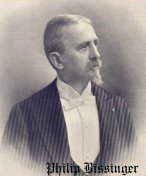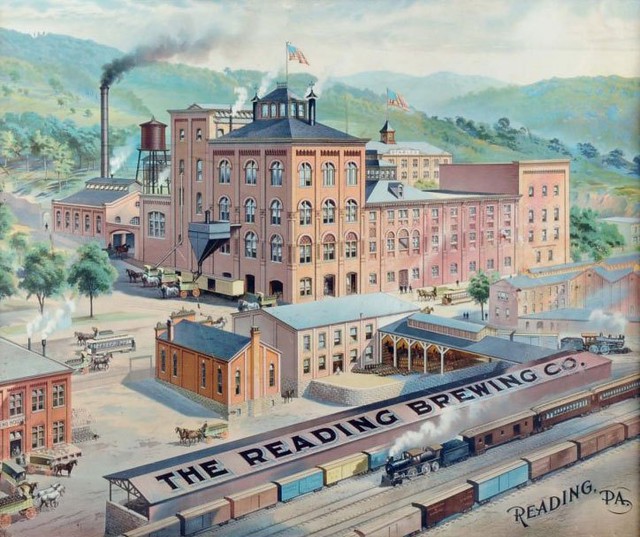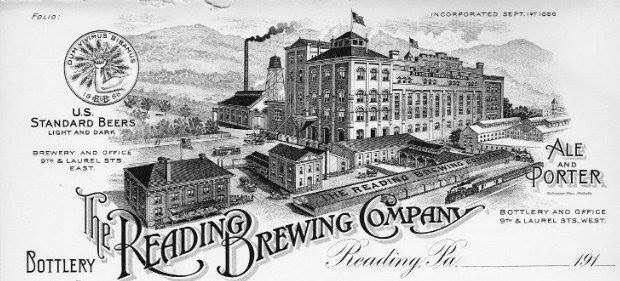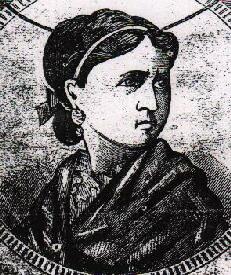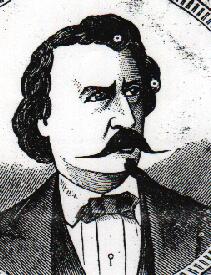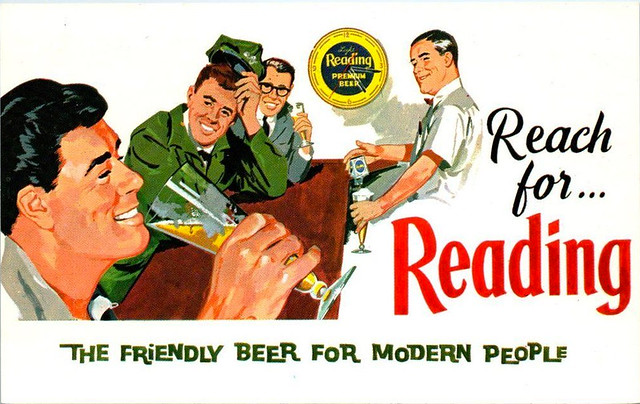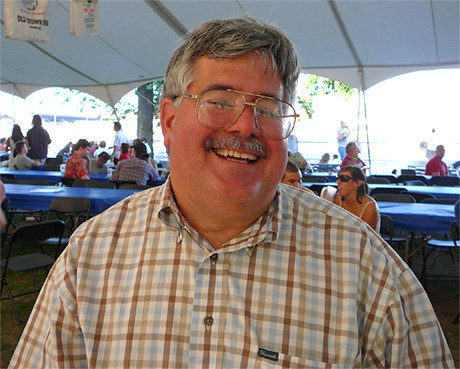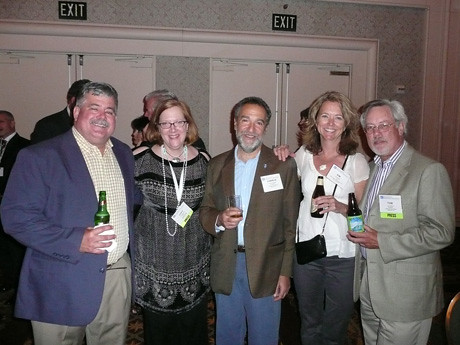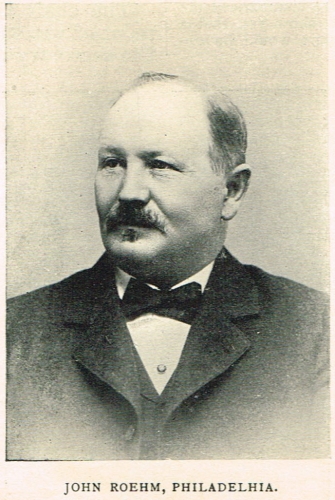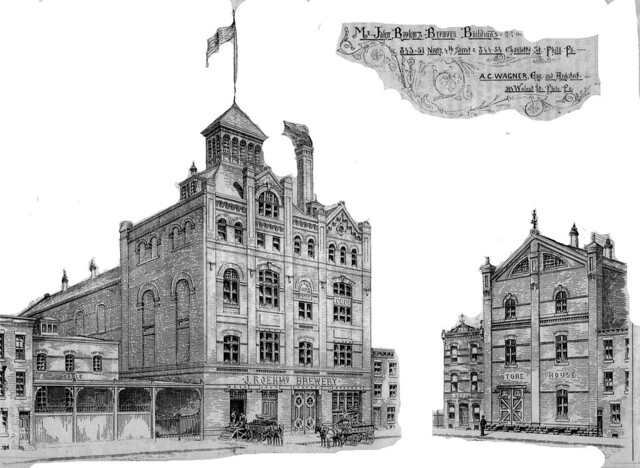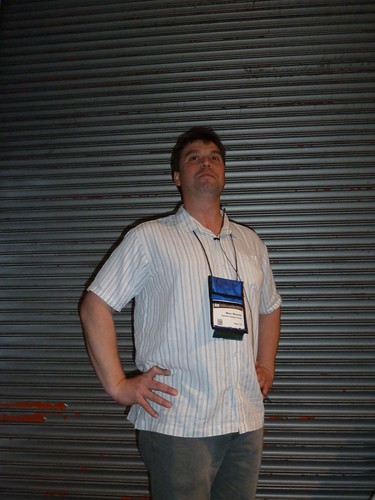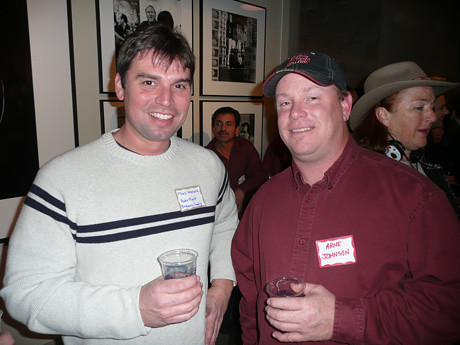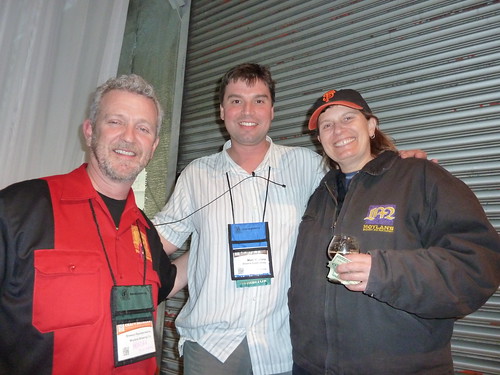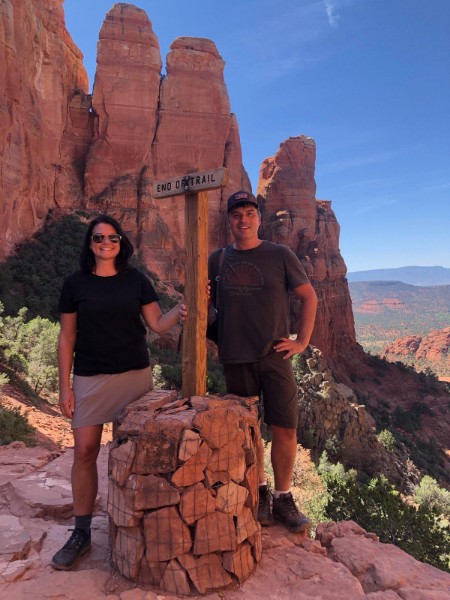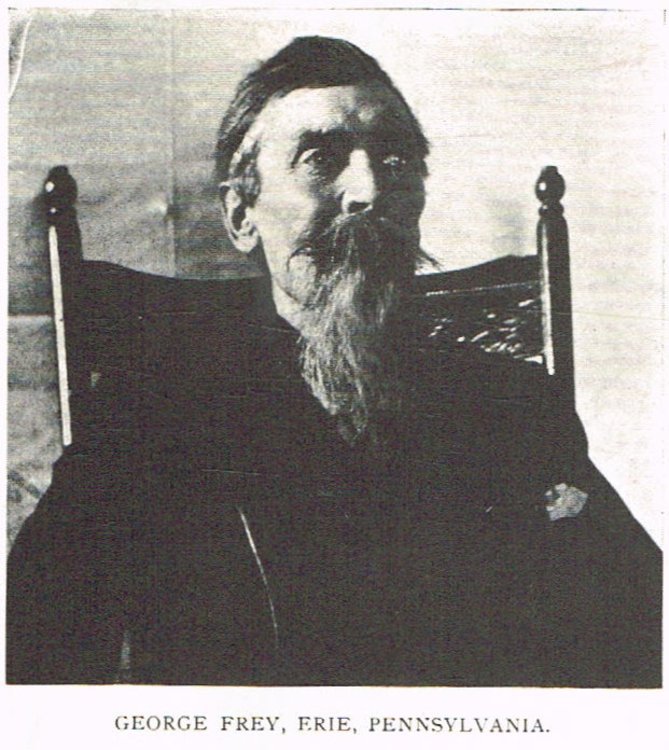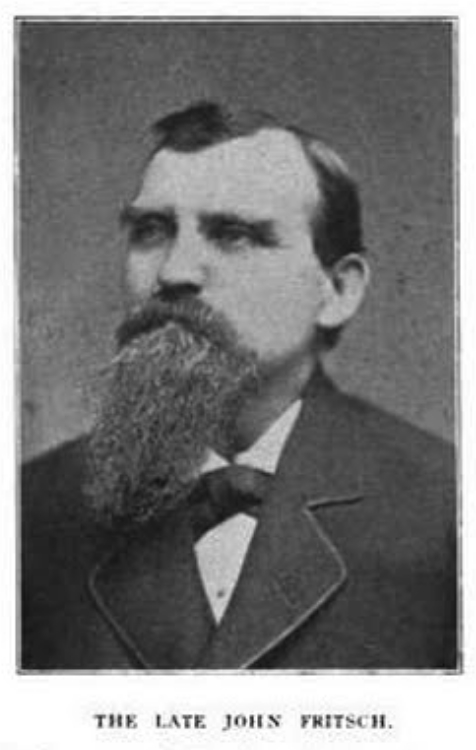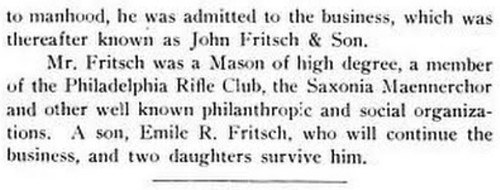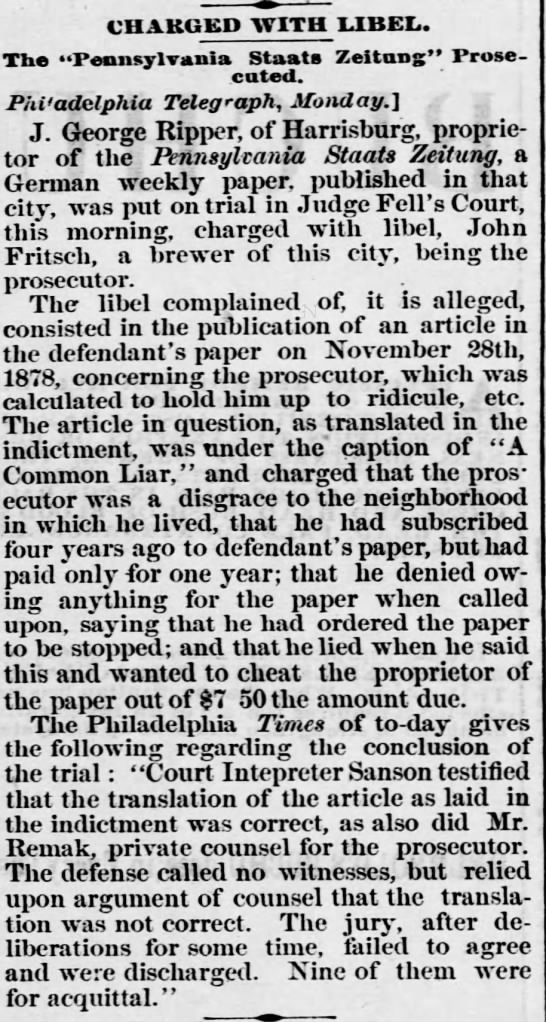
Today is the birthday of Frederick G. Yuengling (January 26, 1848-January 2, 1899). He was the son of David G. Yuengling, who founded the Eagle Brewery in Pottsville, Pennsylvania, which became known as the D. G. Yuengling & Son brewery.
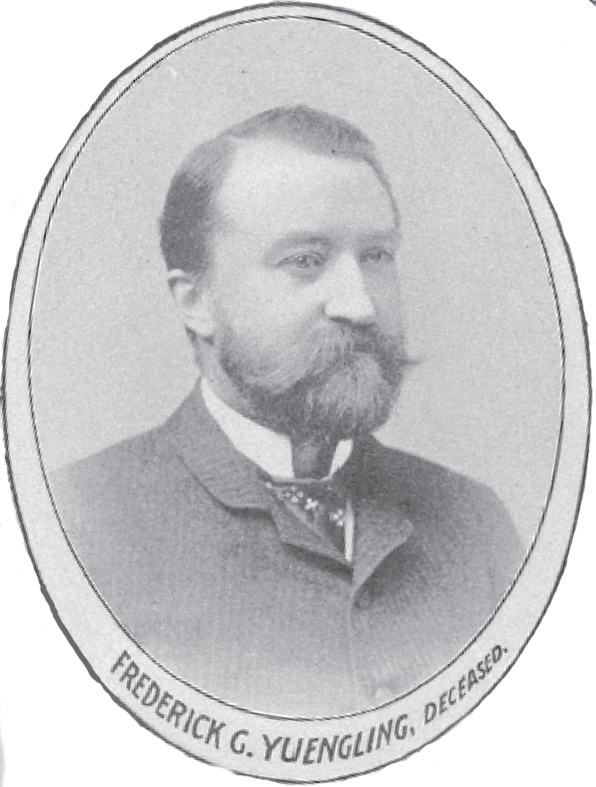
Frederick Yuengling was born to David Yuengling and wife Elizabeth (née Betz) on January 26, 1848. He attended Pennsylvania State College and then the Manhattan Business School in Poughkeepsie, New York. In 1871, his father sent him to Europe to learn more about brewing, where he studied in Munich, Stuttgart and Vienna.
Yuengling married his wife, Minna Dohrman of Brooklynn, on April 3, 1873. Minna was from the “uppermost social class” in New York and enjoyed the mannered social scene in Pennsylvania. The newlyweds purchased a townhouse on Mahantongo Street, a street known for its “opulence” at the time. The house had six bedrooms, formal living rooms, formal dining rooms, a music room, tiled entryways, a Spanish crystal chandelier and German stained-glass windows.
On one occasion, Yuengling took a group of friends to Europe on a grand tour and then back to New York City without allowing them “to spend a cent”. On the top floor of the Yuengling brewery there was a famous room where Yuengling entertained his friends on a lavish scale.
Yuengling and his wife had two children. Frank D. Yuengling was born September 27, 1876. Daughter Edith Louise Yuengling followed on March 18, 1878. Louise died on October 6, 1883, at 5 years old. This left son Frank as the sole heir of his parents.

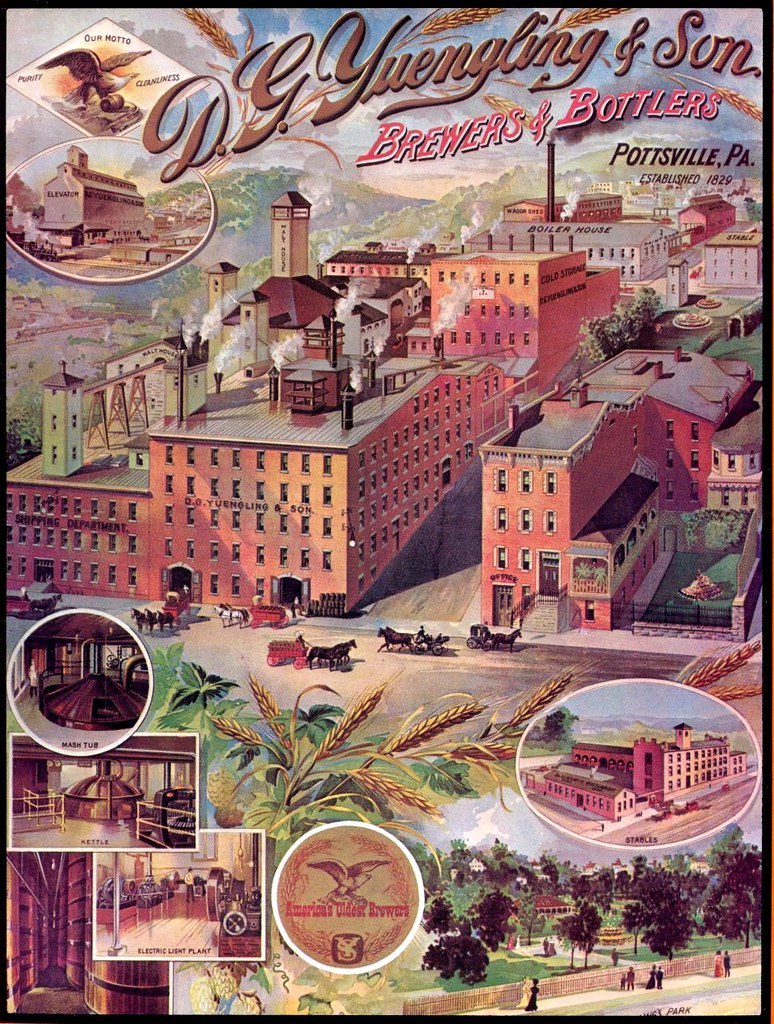
Immigrant Entrepreneurship, under German-American Business Biographies, has a lengthy one of David Gottlob Yuengling, Frederick’s father, but also touches on his son’s time running the brewery:
Under Frederick Yuengling’s guidance, D.G. Yuengling and Son entered a new commercial environment for brewing in the United States. From the time of the brewery’s beginnings until the founder’s sons entered the family business, the United States underwent dramatic economic and demographic changes. Prior to 1845, immigration had been consistently fewer than 100,000 persons per year, except for one year. Subsequently, this number climbed to 350,000 and reached almost 430,000 immigrants per year by 1854, of which a significant portion was German. American cities and towns expanded. Nevertheless, the overall population continued to be predominantly rural with only sixteen percent of Americans living in cities by 1860. Industrialization in the North and Midwest during and after the Civil War combined with continued immigration led to rapid urbanization in the postwar era and cities like New York, Philadelphia, Pittsburgh, Buffalo, and Chicago grew dramatically. It must have dawned on Yuengling’s sons that the future of the brewing business did not just lie in the remote anthracite coal towns of Eastern Pennsylvania but also in the metropolitan centers that attracted the new waves of immigrants.
Regardless of David Jr.’s trials and tribulations, the original D.G. Yuengling & Son enterprise in Pottsville under the leadership of Frederick Yuengling and later grandson Frank Yuengling continued to thrive. Yuengling largely maintained its regional focus and benefited from the continuing economic vitality of the anthracite region of Northeast Pennsylvania. The firm distributed beer via the railroad to communities throughout Schuylkill County. However, other breweries with national ambitions such as Anheuser-Busch and Pabst began making inroads in Pennsylvania, though at first primarily in larger cities such as Pittsburgh and Philadelphia. While it only lay 90 miles from the later city, the anthracite region’s relative remoteness shielded its brewers from direct competition with these increasingly powerful firms. Brewery output reached 100,000 barrels per year in 1918, and the family diversified the firm by acquiring part-ownership in the Roseland Ballroom venues in Philadelphia and New York City, as well as numerous taverns and hotels in or near Pottsville, for all of which Yuengling & Son had the exclusive right to sell their beer.
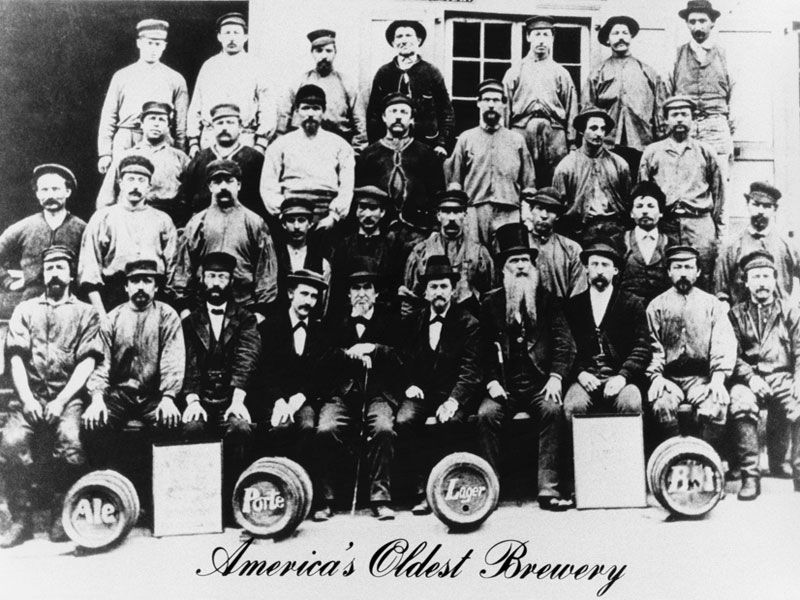
D.G. Yuengling (front and center) with his son Frederick to his left (our right, I think) and the brewery employees in 1873.
And here’s a biography of Frederick G. from the History of Schuylkill County, Pennsylvania, published in 1907.
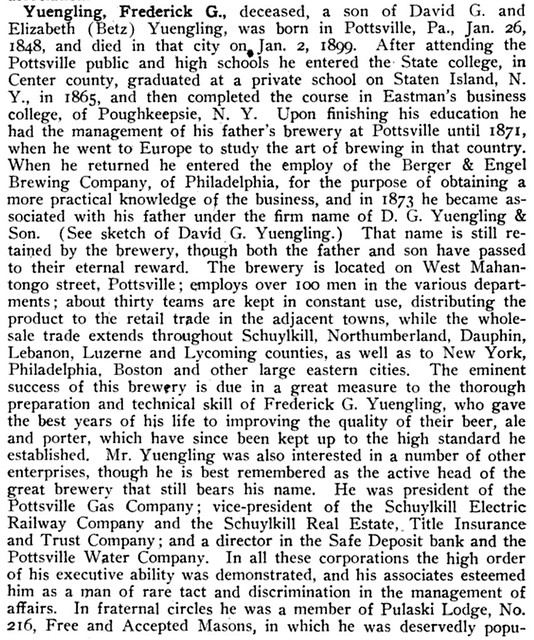


The oldest known photo of the brewery, from 1855.


